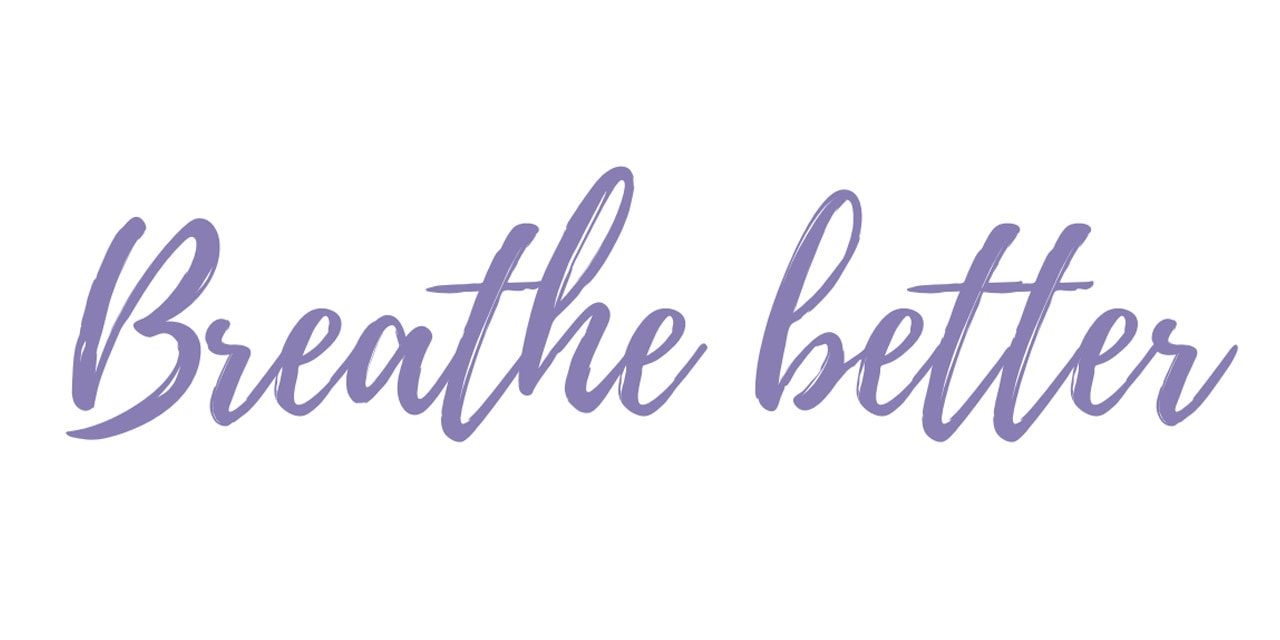
7 essential yoga breathing exercises. By Dr Bhav Gami
Feeling tired, anxious, or on edge? Allowing yourself a few minutes of yogic breathing can bring you into a more emotionally-balanced and energised state to feel fully rejuvenated.
‘Prana’ can be described as the finest vital force of energy, which is separate from the breath; it is the relationship between the prana and the breath. This stronger connection and control of your breath will give you a deeper consciousness of your physical, mental and emotional bodies and therefore can help anchor one’s awareness more in the present. Yogis believe that if you can master your breath through pranayama, you can master your mind!
So, what is pranayama? Pranayama is a collection of breathing exercises practiced by yogis that stem from the ancient texts. These breathing exercises can help us to improve concentration, bring clarity to the mind and ultimately provide the mental strength to deal with life’s adversities and feel happier.
Three-Part Yogic Breath — Sama Vritti Pranayama
This is a great breathing exercise for beginners, which teaches you how to fill and empty the lungs completely.
1. Sit in a comfortable yoga position, with a straight spine, or laying in Savasana. Bring awareness to a gentle, controlled, steady in breath and out breath. As preparation, we build the breath up in parts.
2. For abdominal breathing, we cover the hands over the navel with the middle finger tips touching over the navel.
3. Then, focusing on the abdomen, breathe deeply into the lower lungs, as we activate the diaphragm.
4. As you breathe in this way, the abdomen will expand and it will feel as if you are pushing up the abdominal cavity. Then allow the breath to create this action by breathing into the lower lungs.
5. The thoracic chest cavity breath produces the largest intake of air into the chest during this breath. This breath draws air into the lungs and thus causes an expansion of the thoracic cage. A healthy breath will draw in a large capacity of air.
6. The final part consists of a shallow breath where one breathes in and feels the collar bones lifting upwards.
7. The full breath is experienced by activating the three indivisible parts in one continuous breath, followed by a steady breath out in reverse order.
Benefits
The three-part yogic breath will help oxygen reach into the lungs and thus help nourish the entire body.
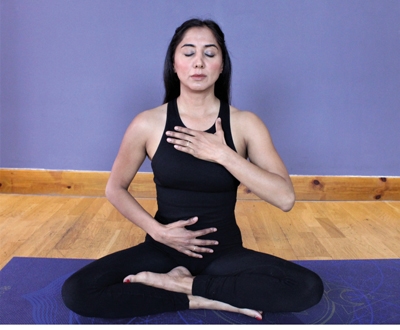
When we are under stress, our breath may be quick and shallow.
Intentional breathing (as in this practice) will help to calm you. Greater oxygen flow to the brain will help you become more focused and alert. The three-part yogic breath will also help relieve stress and even help to address panic attacks.
Contraindications
Pregnant women, people with high blood pressure, lung, heart, eye or ear problems should not hold the retention of breath. Instead, simply work on equalising the length of the inhalation and exhalation.
If you feel dizzy, lightheaded or discomfort, stop and return to a normal relaxed breathing pattern.
Ocean Breath — Uijayi Pranayama
This breath is about mimicking the sound of the ocean or waves by inhaling from the nostrils and making sounds from the throat.
1. Start by sitting in a comfortable position, start inhaling and exhaling from the nostrils and making a sound from the mouth.
2. Now constrict the throat as if something is choking, it will create an oceanic sound.
3. Repeat it 10 to 15 times.
Benefits
This breathing pattern can be helpful to control panic attacks and anxiety and also in the control of mood swings.
Alternate Nostril Breathing — Nadi Sodhana
This is where you block off one nostril, exhaling and inhaling through the other nasal passage, before switching sides. The aim is to bring balance by clearing the energy channels (called Nadis) on both sides of the body.
1. Close the right nostril with the thumb under the nasal cartilage and inhale through the left to the count of three.
2. Fold over the ring and little finger over the left nostril and hold the breath for a comfortable time to start. Target a count of 12.
3. Open the right nostril airway by releasing the right thumb and exhale to the count of six.
4. Repeat the sequence by starting your inhale on your right nostril this time for the count of three.
5. Close your thumb over the right nostril and retain the breath again up to 12.
6. Finally release the left nostril by moving your fingers and exhale to a count of six, keeping the right closed with the thumb.
7. Go back to step 1 and repeat the sequence 1 through to 6, for two more rounds. A total of 3 rounds. The principle of this breath technique has a ratio of 1, 4 and 2. Over time, you can increase the count for the inhale, the breath retention and the exhale of breath.
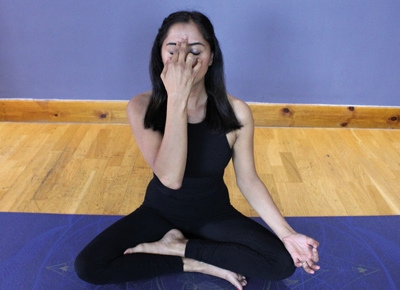
Benefits
This pranayama technique is calming and restorative. It awakens and stimulates energy at the base of the spine and rises to the crown chakra, Sahasaraha.
It calms and balances the mind, improving focus and concentration and can stimulate the calming centres of the brain.
It also reduces anxiety and stress and helps to manage hypertension. In addition, this breath technique can help harmonise the left and right hemispheres of the brain, which correlates to the logical and emotional sides of our personality. It may also benefit asthmatics, Covid-19 and Long Covid sufferers.
Lion’s Breath — Simhasana Lion's
Breath relieves tension and stress by stretching your entire face, including the jaw and tongue. Yes, it will feel silly, but it will also bring some ease and remind you not to take yoga too seriously. If you are getting overheated, try this breath to blow off some steam.
1. Sit comfortably in a cross-legged position or in a kneeling position.
2. Open up your chest by pressing your palms on your knees. Extend your fingers and straighten your arms as you continue breathing.
3. Inhale through the nose.
4. Exhale forcefully through your mouth, making a ‘ha’ sound. Throughout the exhale, open your mouth as wide as you can and stick out your tongue as far as possible towards your chin.
5. As you inhale, return to the neutral position.
6. Practice for 4 to 7 minutes.
Benefits
Often practiced first thing in the morning to warm you up and increase energy, this type of breathing can also stimulate your diaphragm and vocal cords, making it ideal for singers while warming up. This pranayama can potentially make you feel more empowered and strong.
Contraindications
Lion posture or kneeling may be uncomfortable for people with knee injuries or arthritis. Therefore, modify to a seated position that works without pain or discomfort.
Cooling Breath — Shitali Pranayama
This is believed to be the most refreshing of all the breathing exercises and is known as the cooling breath.
1. Roll the tongue in an ‘O’ shape and start to inhale from the mouth.
2. Exhale through the nostrils at the same time.
3. You can repeat this 5 to 10 times.
Benefits
This technique can improve focus, reduce agitation, anger, and anxiety and can help cooling down the body temperature.
It can also help control high blood pressure and aid with indigestion, especially in hyperacidity, as well as with insomnia and muscular relaxation. Also reduces emotional excitement.
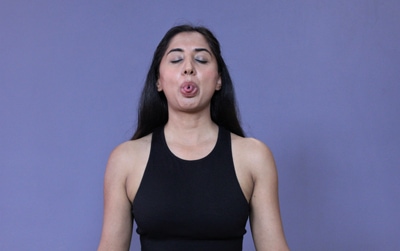
Contraindications
Low blood pressure, asthma, bronchitis, heart disease, chronic constipation. Avoid if you are suffering from a cold as it is counter productive, or in a cold climate, or you feel the cold easily.
Skull Shining Breath — Kapalabhati Pranayama
Kapalabhati is a form of pranayama which consists of short bursts of forceful exhales and slightly longer, passive inhales. Exhalations are generated by powerful contractions of the lower abdomen (between the pubis and navel), which push air out of the lungs. Inhalations are responses to the release of this contraction, which draws air back into the lungs.
1. Begin by sitting in a comfortable position. You may prefer to sit on a chair, on a cushion, on the floor, or on a yoga mat. As in all pranayama techniques, start slowly then build on the practice. Route your sitting bones down towards the earth, lengthen the spine and relax your shoulders. Make sure you head is in a neutral and relaxed position, with the ears aligned over the shoulders, which are aligned over the chest and the chest aligned over the hips.
2. Focusing on your lower abdomen. Many beginners aren’t able to isolate and contract this area, (drawing the navel towards the spine). If required, place both your hands, either placed palm faced down or clenched gently, below your navel.
Now quickly contract (or pump your fisted hands against) your lower belly, pushing a burst of air out of your lungs. Then quickly release the contraction (or your hands), so the belly ‘recoils’ to suck air into your lungs. Start slowly at the beginning. Repeat eight to ten times at about one exhale-inhale cycle every second or two.
3. As you become more comfortable at contracting/releasing your lower abdomen, feel free to increase your pace to about two exhale-inhale cycles every second. Imagine during every exhalation that one is ‘shinning’ light in the inner lining of the skull. Thus cleansing the mind, body and soul.
4. Carry out 25 to 30 cycles at first. Gradually increase the number of cycles so you do each practice to 100 or more.
Benefits
Helps to strengthen abdominal muscles and to improve alertness and concentration.
Contraindications
Avoid if you have had recent abdominal or pelvic surgery. It’s good to practice Kapalabhati in the morning on an empty stomach, to prevent any regurgitation.
Bhramari Pranayama — Humming Bee
Humming Bee mimics the sound of a bee and activates the body channels.
1. Sit comfortably in a seated yoga or meditation position.
2. Take a full breath in and then place the index finger over the ear lobe and restrict the external sounds.
3. Exhale slowly through both nostrils whilst constricting the throat to generate a humming sound.
4. Repeat for 10-15 rounds of breath. Keep the eyes closed through the practice.
Benefits
Shown to be effective in the management of chronic rhinosinusitis and to prevent coagulopathies and morbidity due to Covid-19 by enhancing the expression of Nitric Oxide and increased carbon dioxide by extended exhalation.
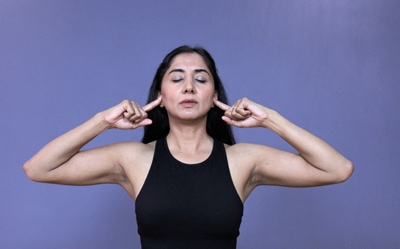
Helps to reduce systolic blood pressure and has a positive effect on the cardiovascular system, stimulating the parasympathetic nervous system producing a relaxing effect, helping to produce calm, release tension, and reduce stress levels. Helps to rejuvenate the immune system.
Dr Bhav Gami is a yoga teacher and London-based holistic GP with a background in urgent care and surgery and also specialises in cancer patients. She has been practicing yoga for over 20 years. Find her on Instagram @yoginimedic




